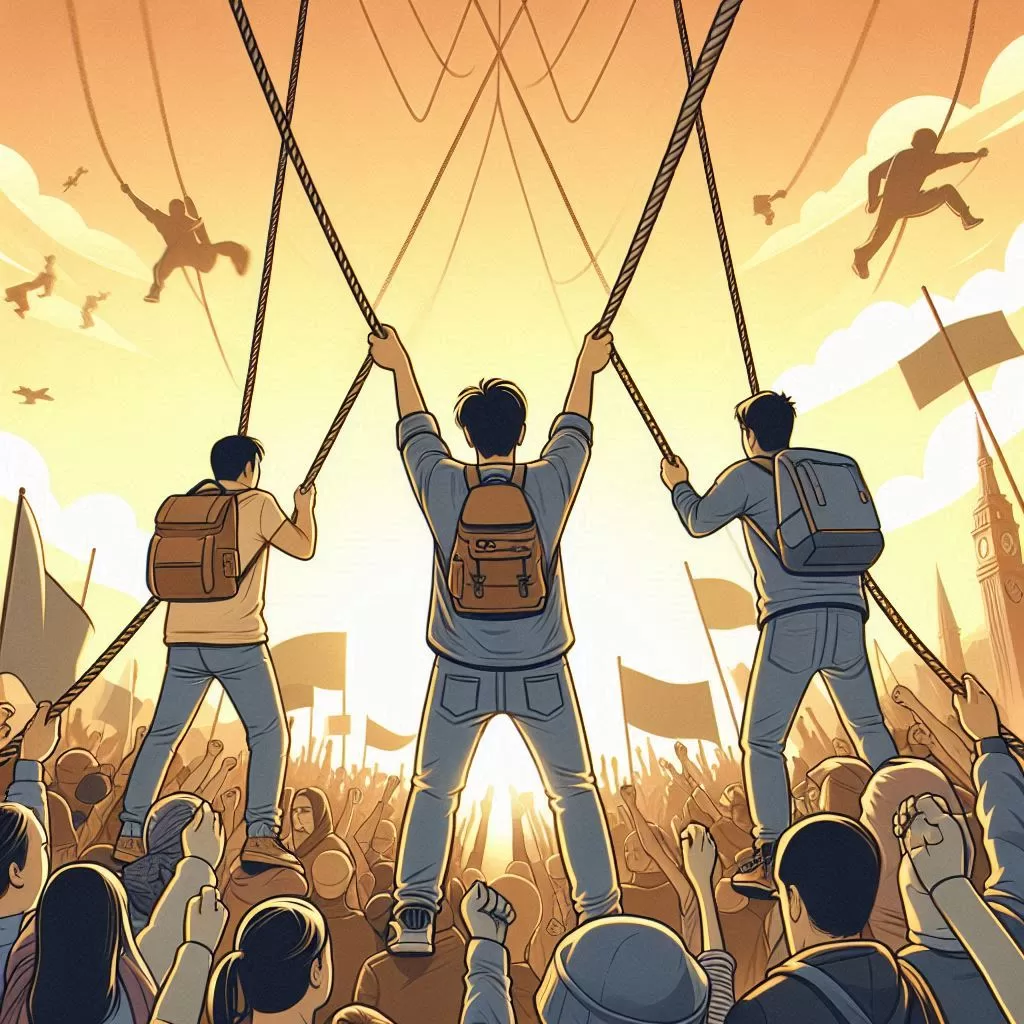May 9 was a momentous day with lots of firsts, at least in the perennially docile Punjab; and the State’s response has been, at best, knee-jerk. Vandalism must not be condoned but the underlying frustration ought to be understood. The protests and the ensuing violence were widespread and organic, and crediting PTI for these would be grossly overestimating the party and ignoring peoples’ sentiments. In MLK’s words, they are the “language of the unheard”.
Protests need to be peaceful, indeed in an ideal world but we don’t live in an ideal world. Throughout history, agitated crowds have protested in a fairly similar manner – vandalism and looting being a part of it. Whether it was the Greco-Roman world of classical antiquity, Europe of the medieval ages, or America of the modern period, protests have often taken a violent turn.
The conventional view saw the crowd as an irrational and unruly beast. French psychologist Gustave Le Bon listed “impulsiveness, irritability, …, absence of judgment” as typical crowd characteristics. But toward the second half of the last century, this view gave way to a more subtle and humane analysis of the crowd. Kerner Commission, formed by American President Lyndon Johnson to investigate the causes of the 1967 summer riots noted that “the prior incidents and the reservoir of underlying grievances contributed to a cumulative process of mounting tension that spilled over into violence when the final incident occurred.”
In recent years, attempts have been made to develop analytical models to better understand crowd moments. David Waddington’s six-level Flashpoints Model of Public Disorder includes the following aspects, 1) Structural, 2) Political & Ideological, 3) Cultural, 4) Contextual, 5) Situational, and finally 6) Interactional. To make this even more comprehensive, Newburn added 7) Impact and consequences of the protests. One can then use these models to analyze the protests of May 9.
Pakistan’s Chronic Chaos – Invisiblites
Structural: Pakistan’s political framework does not provide a path to any meaningful power to ordinary citizens. Dynasty politics continue to rule in cahoots with the military establishment. Local governments have never found a foothold and politics has become a pastime for the elites. None of the major political parties is democratically structured and operates solely on servility to the “chief”. Political powerlessness has caused deep-rooted and ever-increasing frustration.
Political & Ideological: It is not a coincidence that across societies vandalism is often directed at statues because, at a fundamental level, they represent an ideology set in stone. May 9 was no different! Pakistan’s political ideology comprises an all-powerful state that inherited the power mechanism from its colonial masters and derives moral authority from Islam. The State-citizen relationship is only one way, and the citizen is left entirely at the mercy of the State. The rule is this: we are all guilty until proven innocent. Where laws and the constitution are only tools of oppression in the hands of the rulers, people can either surrender or resort to aggression.
Cultural: Marx famously said that the ruling ideas in society are those of the ruling class. Tolerance has never been a forte of Pakistani society. Over the years, the ruling elite has fanned hatred for petty gains. The State mill is obsessed with issuing certificates of treason and kufr. State agencies continue to misuse power without any accountability and remorse but fall back to negotiations when dealing with the likes of TTP. It is the ruling class that has established the axiom of might is right.
Contextual, Interactional, and Situational: To claim that PTI provided a context would be utterly facile. Can a party or an individual create such a sentiment in less than a year? If so, then how fragile were the iron pillars of the State! The context, backed by history, was provided by the outgoing military establishment. I would even argue that the actual flashpoint event was the assassination attempt on PTI’s chairman and May 9 was only a delayed response. What is far more critical is the spatial context. The hotbeds were not some remote parts of Balochistan. The sentiment has now breached Koh-e-Sulaiman (Sulaiman Mountains). It’s in the water and the mighty Indus is sowing the seeds wherever it goes.
Impact and Consequences: People are far more important than broken windows and burnt concrete. The eyes and ears of the State are failing to realize the sentiment on the ground. It is the hearts that are burnt and broken; people are losing hope in this country. The protestors must not be seen as PTI’s people, they are Pakistanis first. Prosecuting them under the Army Act would only further deepen the crevasses between the State and the people. The vicious clampdown will not kill the sentiment, but rather create an antithetical adversary. The State and its institutions must realize that they are setting questions that will be answered in the years to come. Can the State for once come out of its tactical mentality and think on a strategic level? The events of May 9 cannot be undone but the State’s reaction will determine their long-term consequences.
The only real solution is to analyze and address the underlying causes of the events of May 9. The State continues to use tactics that led to large-scale instability in Balochistan and KPK. The champions of journalism and human rights are once again mum while PTI continues to disown the protestors and preposterously weave yet another conspiracy theory. In the end, a simple reminder for all stakeholders from Lao Tzu in Tao Te Ching, “Violence, even well-intentioned, always rebounds upon oneself”.
The article was originally published in The Geopolitics in May 2023.
[Shiraz Gulraiz is the Founding Editor of Invisiblites. He holds a Ph.D. from The University of Texas at Austin.]
[Photo credits: Copilot (microsoft.com)]
